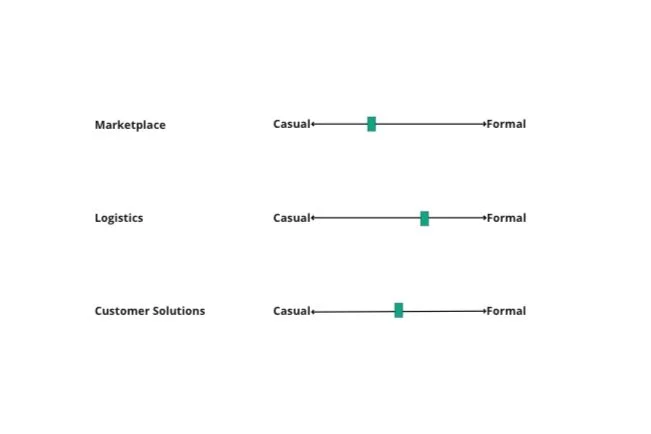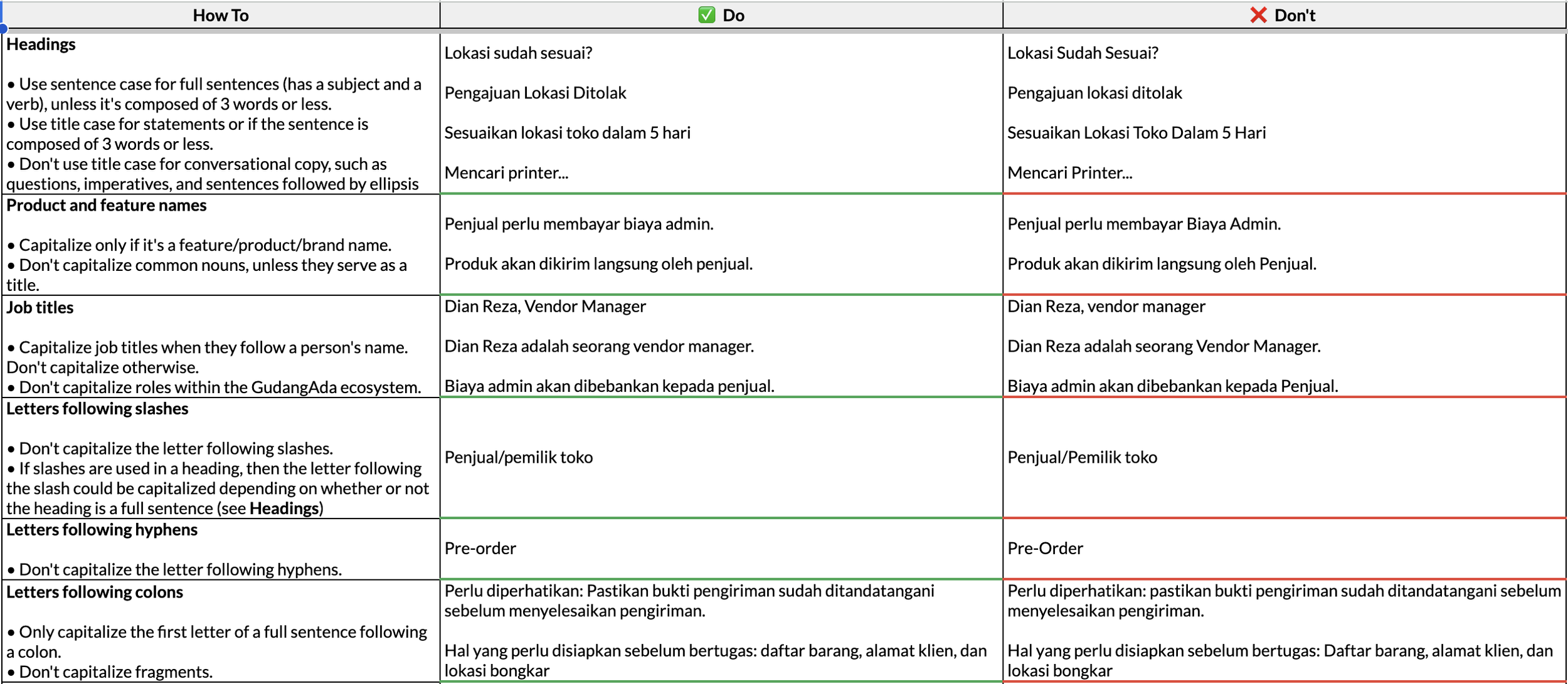GudangAda Content Style Guide
UX WRITING • APR – NOV 2022
PROJECT BACKGROUND
When I joined GudangAda, only one UX writer was assigned to a particular business unit. In other business units, all copywriting tasks were done by designers who often sought the writer’s advice. I found this to be inefficient and unscalable. So while we’re hiring more writers to fill in the much-needed vacancies, a content style guide would help set content standards across the products and marketing in GudangAda.
how i helped
Assisted by a UX writer, I:
Set up the project direction and timeline
Benchmarked with competitors’ copies and mined conversations in the B2B e-commerce forums to learn more about users’ tone and lingo
Conducted an internal interview to learn more about the users
Developed the tone of voice via an internal workshop with stakeholders, designers, and researchers
Benchmarked with some of the preferred content style guides in the industry
Developed and finalized the content style guide framework and contents
problem & Requirements
Limited Language and Copy Insight
When benchmarking with competitors in the B2B e-commerce space in Indonesia and abroad, I couldn’t find that many references. So, we had to look inward. However, interviewing real users was also a no-go. Our users were micro, small, and medium enterprise (MSME) owners whose days were typically occupied with shop activities. Talking to them directly might add to their chaos and seemed inefficient and ineffective, as most were also first-time app users whose main concerns still revolved around services.
Our solutions: We conducted an internal interview with stakeholders, design, and research peers who knew about user problems well. Also, as MSME owners in Indonesia were active Facebook users, we mined terms and lingos in Facebook trade community forums.
Different Product and User Varieties
GudangAda’s products and services range from a B2B marketplace to logistics and SaaS services with widely different user profiles. Marketplace users were mostly small to medium shop owners with limited tech-savviness; logistics dealt with drivers, warehouse owners and staff, and marketplace users; SaaS users were bigger business owners with more tech-savvy staff.
Our solutions: We created a voice that represented and felt familiar to most of our users (MSME owners) and adjusted the tone to fit each product’s identity.
GudangAda voice
Simple
We explain things clearly and in a straightforward manner. The things we write are single-meaning and unambiguous.
Genuine
As we understand our users' struggles, we always err on the positive side. We speak on their level — plainly and free of unnecessary pomp and jargon. Everyone can easily understand our content.
Guiding
We give information when and where our users need it in the way they understand it best. We'd rather lay things out for our users than use trade-specific terms only some understand.
Casual but Respectful
We are relaxed. We follow grammar conventions but adjust them to everyday conversations that make sense. As we're aware of our users' varied backgrounds and challenges, we rein in our humor.
Tone spectrum across products
Tone Map
implementation
Tone Implementation Examples
Guide Example - Capitalization
Outcome
With a tone of voice and content style guide available, designers, stakeholders, marketers, and of course, writers had a north star for writing copy. The copies across products had also shown improved consistency.








